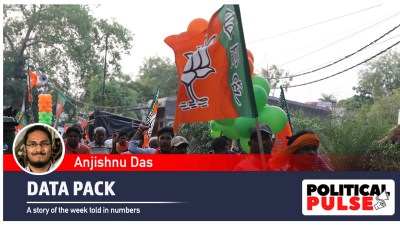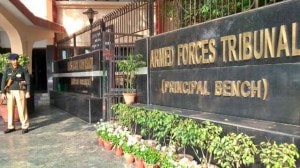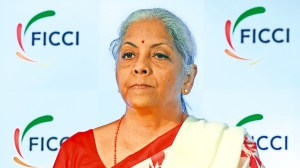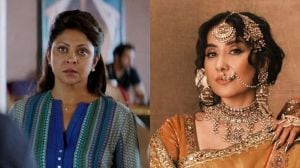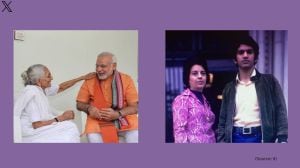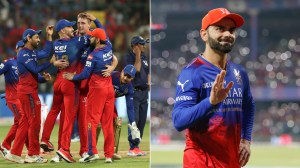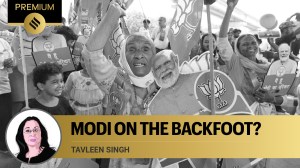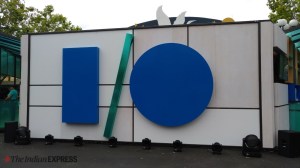- India
- International
Babri Masjid demolition case: A timeline of the long-standing dispute
Babri Masjid demolition case: The issue dates back to 1992, when hundreds of karsevaks demolished the 16th century mosque in Ayodhya amid claims that it was built on the birthplace of Lord Rama
 The Supreme Court has ordered the CBI to ensure that witnesses are produced in court everyday so that there is no delay in the Babri demolition case trial and said the trial be completed in two years. (File Photo)
The Supreme Court has ordered the CBI to ensure that witnesses are produced in court everyday so that there is no delay in the Babri demolition case trial and said the trial be completed in two years. (File Photo)
The Supreme Court on Wednesday ruled that senior leaders of the BJP including Lal Krishna Advani, Uma Bharti and Murli Manohar Joshi will face criminal conspiracy charges in the Babri Masjid demolition case. The apex court has directed the sessions judge in Lucknow to conduct the trial in the Babri Masjid demolition case on a daily basis, and has said that the judge will not be transferred. It also ruled out a fresh trial in the case. The Supreme Court has also ordered the CBI to ensure that witnesses are produced in court everyday so that there is no delay in the trial. The Supreme Court also said that the trial will have to be completed in two years.
On December 6, 1992, hundreds of kar sevaks descended on Babri Masjid in Ayodhya and demolished the 16th century mosque. They claimed that the mosque was built on land considered holy by Hindus who believed it to be the birthplace of Hindu deity Lord Rama. It triggered widespread Hindu-Muslim violence. A number of senior BJP leaders, including LK Advani and Murli Manohar Joshi, are accused in the case.
Here is a timeline showcasing the long-standing dispute:
1528: The Babri Masjid, a mosque in Ayodhya, is constructed by Mir Baki on the orders of Mughal emperor Babar. Although, it has never been proven that the mosque was built in 1528, it is the wider consensus based on evidence stretching over centuries. According to the Hindu community, it was built on the foundations of a temple which marked the birthplace of Lord Ram in Ayodhya.
1949: In the early hours of December 23, 1949, idols of Lord Ram appeared inside the mosque, allegedly put there by Hindus. It leads to widespread protests and both communities file suits. Hashim Ansari files the suit for Muslims and Mahant Paramhans Ramchandra Das for Hindus. The government declares the site disputed and locks the gates.
1950: Mahant Paramhans Ramchandra Das, the chief of Ram Janmabhoomi Nyas, and Gopal Singh Visharad file suits in Faizabad seeking court’s sanction to pray before the idols installed at the structure. The court gives the nod to hold puja ceremony. Inner courtyard stays locked.

1959: Nirmohi Akhara, one of the main parties to the dispute, and others file a suit seeking permission to hold prayer ceremonies again.
1961: Sunni Central Board of Waqfs in Uttar Pradesh files a suit staking its claim to Babri Masjid. It argues that the area surrounding the mosque is a graveyard.
1984: The Vishwa Hindu Parishad constitutes a group to continue the movement and BJP leader L K Advani is put in charge of the campaign. VHP organises a massive procession from Sitamarhi to Ayodhya in late September. Hindus believe Sitamarhi to be the place where Lord Ramas wife Sita emerged from the earth. The procession reaches Ayodhya after 12 days. At least 50,000 faithfuls join the procession. The crowd reaches Sarayu river in Ayodhya and, according to participants’ accounts to multiple publications, takes an ‘oath’.
February 1, 1986: Faizabad district judge gives the order for the gates of the structure to be opened to Hindus so they can pray before the idols. Soon after this decision, Babri Masjid Action Committee was constituted.
1989: The then prime minister Rajiv Gandhi allowed shilanyas or a ground-breaking ceremony in a site located close to the mosque structure. The site is undisputed. Afterwards, the case hearing is shifted to the Allahabad High Court.
September 25, 1990: Advani launches a rath yatra (pilgrimage procession) from Somnath to Ayodhya in a bid to to galvanise and mobilise a countrywide support to their movement.
November, 1990: Advani’s rath is stopped at Samastipur, Bihar where he is arrested. Displeased with his arrest, the BJP withdraws its support to the VP Singh government. The move triggers fresh elections.
December 6,1992: Hundreds of kar sevaks tear down the mosque and a makeshift temple is erected in its place. The demolition triggers massive riots across the country and at least 2,000 people are killed. The PV Narasimha Rao-led Congress government moves court to reinstate status quo.
March 5, 2003: The Allahabad High Court orders the Archeological Survey of India to examine the disputed site and submit its report. ASI is ordered to find out whether a temple actually existed where the mosque stood.
August 22, 2003: The ASI submitted its report to the Allahabad High Court. The report finds that there were features of a 10th century temple beneath the site of the mosque.
August 31, 2003: All India Muslim Personal Law Board says it will challenge the ASI report in court.
July 26, 2010: The bench reserves its judgment and recommended all parties to settle the issue in an amicable manner. But no one is keen.
September 8, 2010: The High Court announces that the verdict will be pronounced on September 24.
September 14, 2010: A writ petition is filed seeking deferment of the judgment. It is, subsequently, quashed by the High Court.
September 23, 2010: Supreme Court receives plea for an out-of-court bargain. The apex court says it will hear it again on September 28.
September 28, 2010: The Supreme Court rejects petition for deferment. It gives the nod to Allahabad High court to deliver the judgement. The High Court fixes September 30 as the date to pronounce the verdict.
September 30, 2010: The Allahabad High Court pronounces its verdict on the long-standing Ayodhya Ram Janmabhoomi-Babri Masjid issue and rules for a three-way division of the disputed area between the Sunni Waqf Board, the Nirmohi Akhara and the party for ‘Ram Lalla’.
February 26, 2016: The Supreme Court permits BJP leader Subramanian Swamy to intervene in the pending matters relating to the Ayodhya dispute. Swamy’s plea seeks construction of a Ram temple at the site of the demolished Babri Masjid structure
April 19, 2017: The Supreme Court rules that senior BJP leaders LK Advani, Murli Manohar Joshi and Uma Bharti will face charges of criminal conspiracy in the Babri Masjid demolition case. The apex court merges two separate cases being heard in Lucknow and Rae Bareli relating to the mosque’s demolition. Hearings to be held on a daily basis in Lucknow. The apex court says the judge hearing the case will not be transferred and the matter will have to be decided in two years. To ensure no delay is caused in proceedings, court orders CBI to produce witnesses in court daily. No fresh trial to take place. Rajasthan Governor Kalyan Singh’s trial to begin once he ceases to be governor. Till then, he enjoys constitutional immunity.
May 12: Latest News
- 011 day ago
- 0223 hours ago
- 031 day ago
- 041 day ago
- 0520 hours ago


